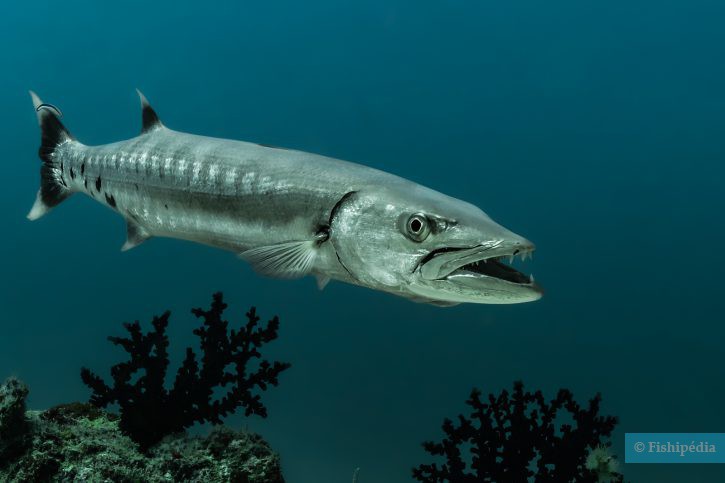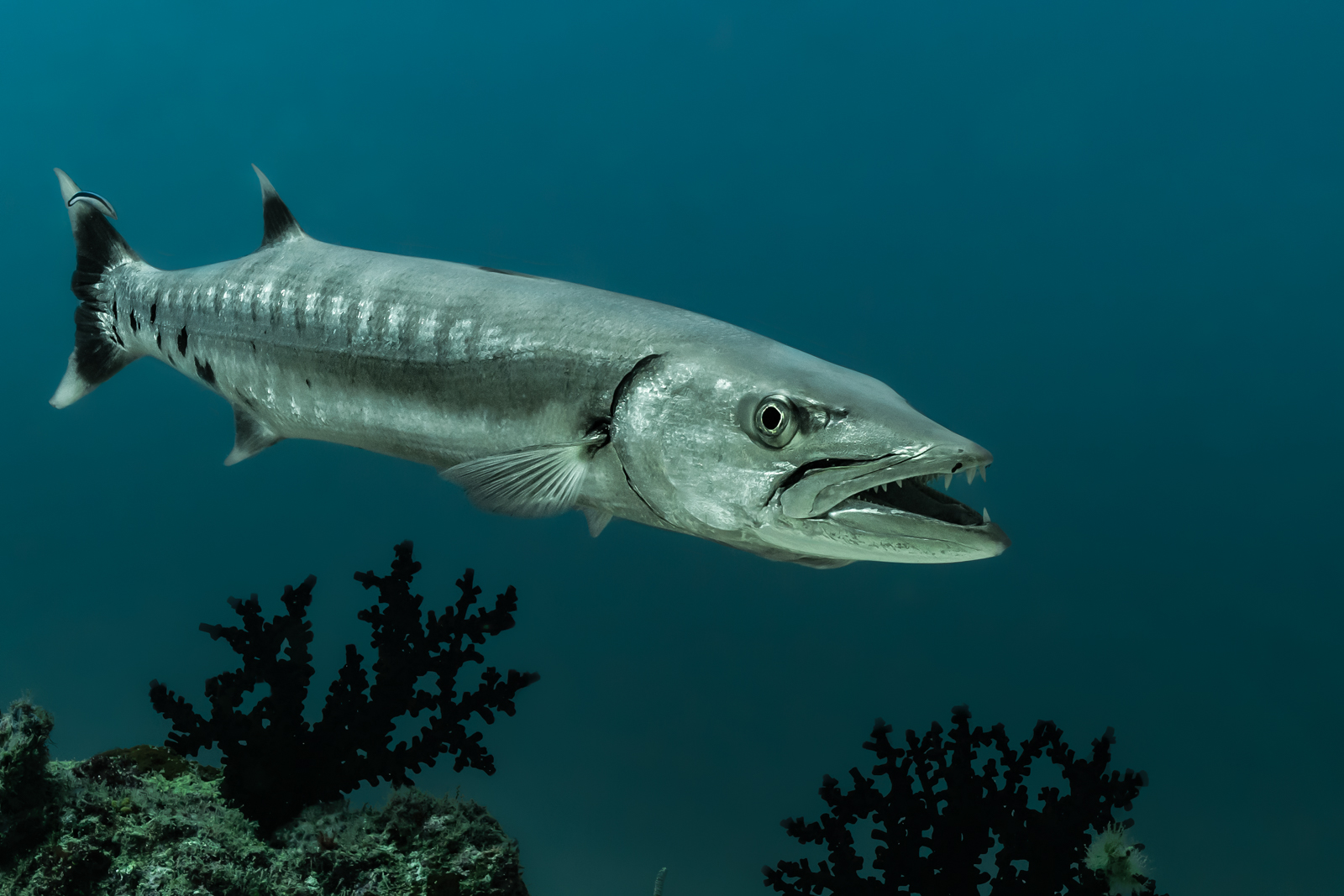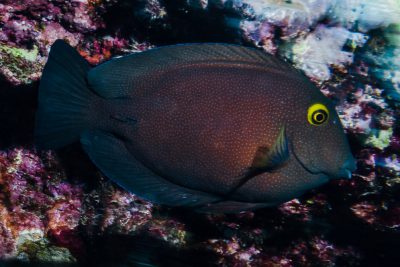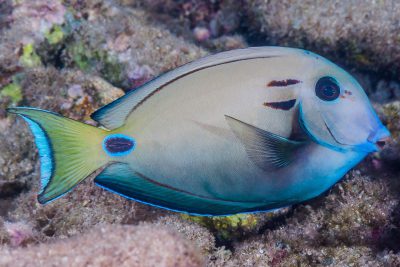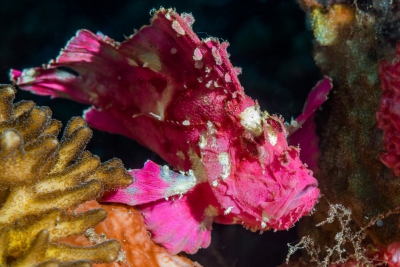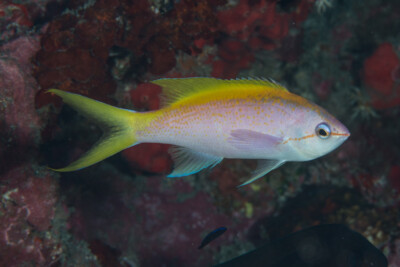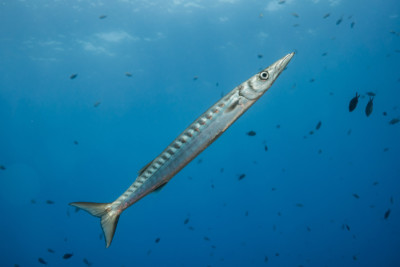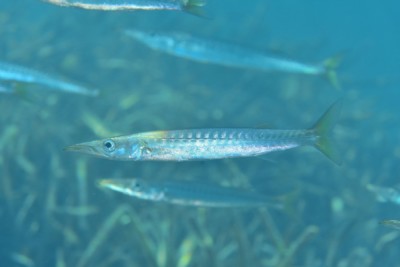Introduction
Sphyraena barracuda, commonly known as great barracuda, is a salt water fish.
This sheet is currently being prepared. The texts currently proposed come from our data model or are being drafted. To request priority for this content, you can write to us HERE.
Who is it?
Morphology
-
Average size140 cm
-
Maximum size200 cm
-
Patternvertical stripes
-
Average size140 cm
-
Maximum size200 cm
-
Patternvertical stripes
How to recognize This fish ?
The great barracuda measures between 140 and 200 cm. This fish is unicolore with a predominantly gris body. The also has noir vertical stripes.
Behaviour & Life cycle
-
dietcarnivorous
-
Sociabilitysolitary
-
territorialYes
-
Way of livingdiurnal
The great barracuda hunts in the stalk and is one of the predators of its biotope. Opportunistic, it does not hesitate to attack any smaller animal nearby.
The great barracuda is a fish solitary naturally found close to the surface. This species is carnivorous .
This species is territorial and does not appreciate the presence of intruders nearby, especially animals with similar behavior. However, the great barracuda is generally peaceful with non-territorial animals that cannot be potential prey.
Reproduction
-
Reproductionovipare qui pond en eau libre
The great barracuda is a fish ovipare qui pond en eau libre.
Risks for humans
-
VenomousNo
-
BiteYes
This species can attack if it feels threatened. It is important to be particularly vigilant especially during dives or fishing sessions.
Origin and distribution

Conservation status of populations (IUCN)
What is its habitat?
Natural environment characteristics
-
Depth1 - 100 m
Biotope presentation
The great barracuda is most often found at a depth between 1m and 100m. However, it is not impossible to find this species at other depths.
Species of the same biotope
Fishkeeping
Not recommended
We do not recommend keeping this species in an aquarium. It has unpredictable needs which, if not met, generate significant stress, potentially leading to a shorter life expectancy, an interruption of its growth or the development of pathogens.
To go further
Sources & Contributions
Participation & Validation
The Fishipedia team and specialist contributors are committed to providing high-quality content. However, although the information comes from scientific sources or testimonials from specialists, the cards may contain inaccuracies.

Adrien Falzon

Benoit Chartrer

Yuhei Nakata
Translation
Translation done with the valuable contribution of our translators, who make this information available to a wider audience. We sincerely thank them for their commitment.
Scientific partners
Tags
#Sphyraenidae
#Sphyraena
#mangrove
#récifs extérieurs
#Bay of Bengal
#Gulf of Mexico
#Great Barrier Reef
#mer d'Oman
#Tasman Sea
#Caribbean Sea
#Philippine Sea
#Sea of Japan
#Red Sea
#South East Asian Seas
#Indonesian seas
#Atlantic Ocean: North Coast of Brazil
#Océan Atlantique Est Afrique - Angulhas
#Océan Atlantique Est Afrique - Bengala
#Océan Atlantique Est Afrique - Golfe de guinée
#Temperate Eastern Atlantic Ocean
#Océan Atlantique Est Afrique - Transition & Cap Vert
#Gough Island
#Saint Helena
#Northwest warm temperate Atlantic Ocean
#Southwest warm temperate Atlantic Ocean
#Eastern tropical Atlantic Ocean
#Southwest Tropical Atlantic Ocean
#western Indian Ocean
#Galapagos
#Océan Pacifique Nord Est Tempere Chaud
#Océan Pacifique sud-est tempéré chaud
#Tropical Eastern Pacific
#Western Tropical Pacific Ocean
#Réunion
Same genus
Species of the same biotope
